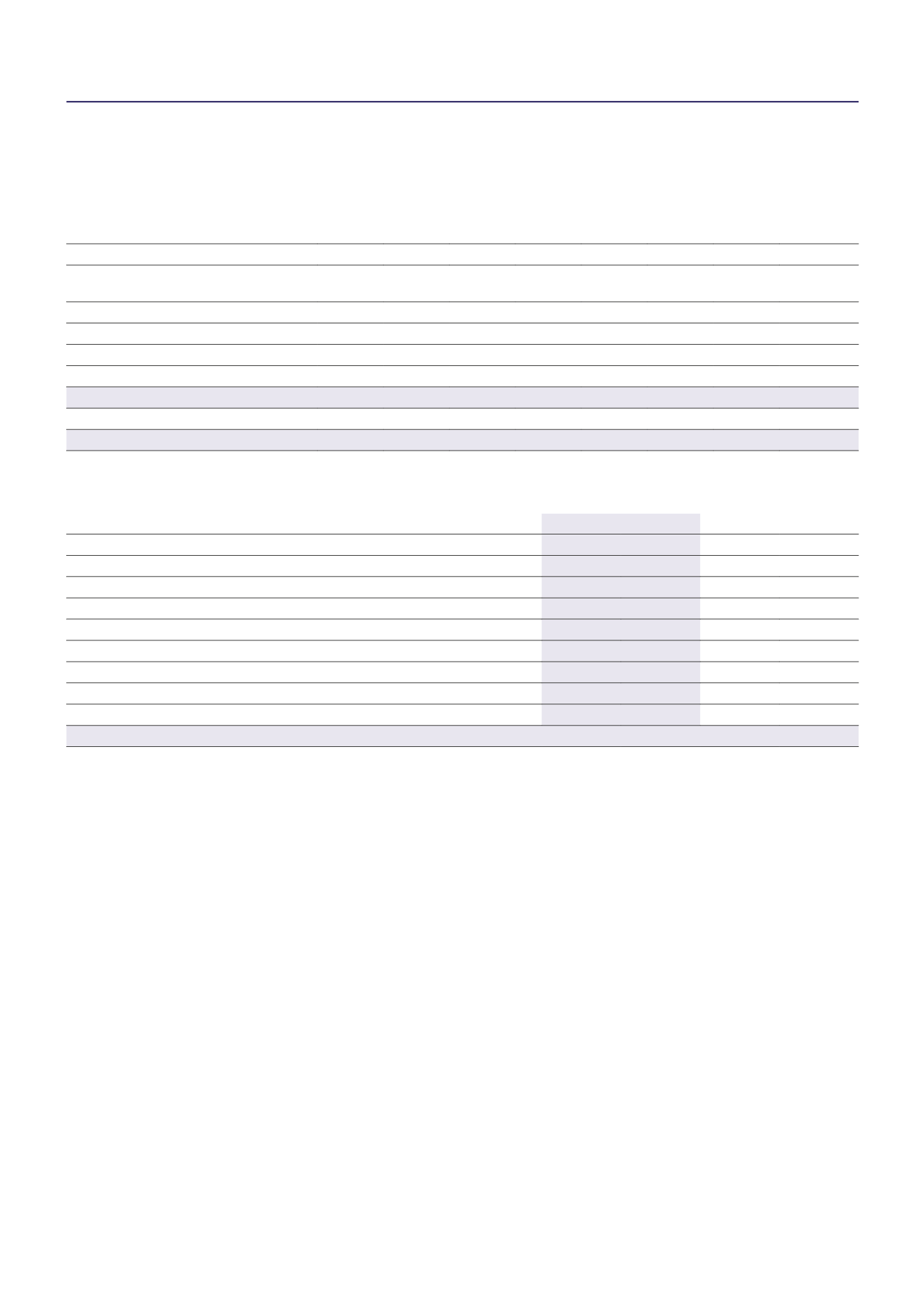

138
Rothschild & Co | Annual Report 2017
In millions of euro
France Switzerland
UK and
Channel
Islands
Rest of
Europe
Americas Australia
and Asia
Other 31/03/2017
Cash and amounts due from central banks
580.2 3,324.7
–
2.5
–
–
–
3,907.4
Financial assets at fair value through profit
or loss
(1)
9.8
7.5
8.2
5.3
0.9
1.2
0.1
33.0
Loans and advances to banks
1,088.7
74.6 297.5 233.1 177.7
29.7
16.8 1,918.1
Loans and advances to customers
1,500.9
99.1 697.7 310.3 127.9
68.9
62.5
2,867.3
Available-for-sale debt securities
658.6
2.8
93.0 203.8
93.0
4.5
9.3 1,065.0
Other financial assets
156.7
39.4
68.2
78.9
50.6
38.0
34.4
466.2
Subtotal assets
3,994.9 3,548.1 1,164.6 833.9 450.1 142.3 123.1 10,257.0
Commitments and guarantees
275.6
95.2
25.1
55.4
0.9
11.1
31.2
494.5
TOTAL
4,270.5 3,643.3 1,189.7 889.3 451.0 153.4 154.3 10,751.5
(1) Excluding equity.
B) CREDIT RISK BY SECTOR
In millions of euro
31/12/2017
% 31/03/2017
%
Cash and amounts due from central banks
3,868.9
36% 3,907.4
36%
Households
2,434.8
23% 2,270.0
21%
Credit institutions
1,800.6
17% 1,915.3
18%
Liquid debt securities from other sectors (diversified)
825.1
8%
817.2
8%
Real estate
374.6
4%
325.7
3%
Short-term fee income receivable from other sectors (diversified customers)
331.9
3%
361.0
3%
Other financial corporations
283.1
3%
285.2
3%
Government
(1)
112.3
1%
196.3
2%
Other
584.9
6%
673.4
6%
TOTAL
10,616.2
100%
10,751.5
100%
(1) The “Government” exposure predominantly consists of high-quality government securities.
The sectors above are based on NACE classification codes (“Nomenclature of Economic Activities”), and other categories used for FINREP regulatory reporting.
Previous reporting on sectoral risk has been prepared by mapping local data to GICS (Global Industry Classification Standards) codes. The Group now
records all sectoral exposure using NACE codes, and, therefore, the sector risk disclosure has been amended to reflect this. Comparative information
has also been restated to be consistent with this presentation.
Short-term accounts receivable and highly liquid debt securities held for treasury management are exposed to various diversified sectors. Any temporary
exposure to these sectors is not thought by management to pose a significant sectoral risk, and is not expected to be indicative of sectoral concentration
for these assets in future. Therefore, these exposures are not analysed further in this note.
C. Market risk
Market risks associated with treasury and equity positions are described below with a description of the levels of risk. Market risk management is covered
in the report on internal control and risk management procedures (page 66).
1 Equity investments
The Group has exposure to equity price risk through holdings of equity investments. Each of these positions is individually approved by management and
is monitored on an individual basis.
If the price of these equities were to fall by 5% at 31 December 2017, then there would be a post-tax charge to the income statement of €24.2 million
(31 March 2017: €17.9 million) and a charge to equity of €21.3 million (31 March 2017: €22.4 million). Under IFRS 9, from January 2018, the charge
through P&L would be higher because more of the equities will be measured at FVTPL.
Moreover, the Group is exposed through its investments to the risks affecting the companies in which it invests.
Notes to the consolidated financial statements









